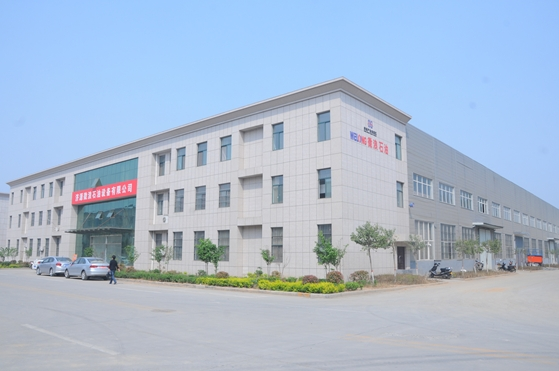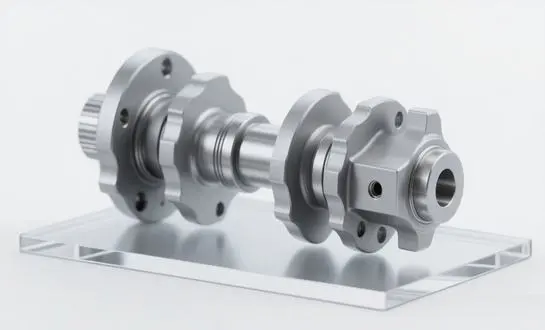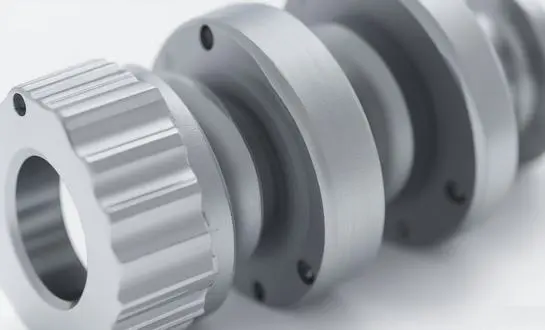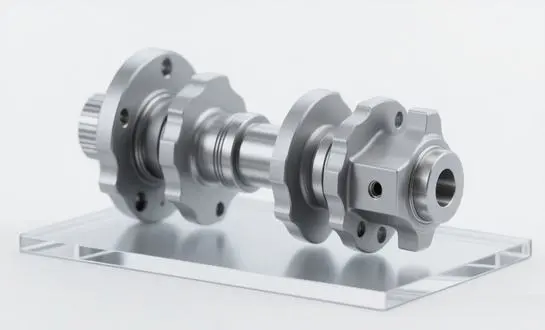Role of forged shafts in high-speed rail track stability
Enhanced structural integrity
Forged shafts contribute significantly to the structural integrity of high-speed rail tracks. The forging process aligns the metal's grain structure, resulting in components with superior strength and durability. This enhanced structural integrity is crucial for maintaining track stability, especially when trains travel at high velocities. Forged shafts used in track components such as rail fasteners, sleeper anchors, and switch points can better resist the dynamic forces exerted by passing trains, minimizing track deformation and ensuring consistent geometry.
Vibration dampening capabilities
High-speed rail systems generate substantial vibrations that can compromise track stability and passenger comfort. Forged shafts, particularly those made from advanced alloys, exhibit excellent vibration dampening properties. When incorporated into track support structures and suspension systems, these shafts help absorb and dissipate vibrational energy, reducing the transmission of forces to the surrounding infrastructure. This dampening effect contributes to smoother rides, decreased wear on track components, and improved overall system longevity.
Precision in critical components
The shaft forging process allows for the production of highly precise components, which is essential for maintaining tight tolerances in high-speed rail systems. Forged shafts used in track alignment mechanisms, such as gauge adjustment devices and cant control systems, ensure accurate and consistent track geometry. This precision is crucial for maintaining stability at high speeds, reducing the risk of derailments, and optimizing the performance of the entire rail system. The ability to create complex shapes and maintain tight dimensional control through forging enables the development of innovative track stabilization solutions that were previously unfeasible with traditional manufacturing methods.
Case studies: Forged components in bullet train systems
Japanese Shinkansen: Pioneering forged bogie frames
The Japanese Shinkansen, renowned for its safety and efficiency, extensively utilizes forged components in its bullet train systems. A notable application is the use of forged bogie frames, which are crucial for supporting the train's weight and ensuring smooth operation at high speeds. These forged frames, produced through advanced shaft forging techniques, exhibit exceptional strength-to-weight ratios and resistance to fatigue. The implementation of these components has contributed to the Shinkansen's impeccable safety record and ability to operate at speeds exceeding 300 km/h while maintaining stability and passenger comfort.
German ICE trains: Forged wheelsets for enhanced performance
Germany's Intercity Express (ICE) trains have incorporated forged wheelsets to improve performance and safety. These wheelsets, which include forged axles and wheels, are designed to withstand the high stresses encountered during high-speed operation. The forging process imparts superior mechanical properties to the components, including improved fatigue resistance and impact strength. As a result, the ICE trains can maintain higher speeds for longer durations, reduce maintenance intervals, and provide a smoother ride for passengers. The success of these forged components has led to their adoption in other European high-speed rail networks, demonstrating the widespread benefits of forging technology in modern railway systems.
Chinese CRH380: Forged transmission shafts for reliability
China's high-speed rail network, one of the most extensive in the world, has benefited significantly from the use of forged components. The CRH380 series trains, capable of speeds up to 380 km/h, employ forged transmission shafts in their propulsion systems. These shafts, produced through advanced forging processes, exhibit exceptional torsional strength and resistance to fatigue. The implementation of these high-performance components has contributed to the reliability and efficiency of China's high-speed rail network, enabling frequent service and reducing the likelihood of mechanical failures. The success of these forged shafts has prompted ongoing research and development efforts to further optimize forging techniques for railway applications, driving innovation in the industry.
How does forged steel reduce rail track wear and tear?
Enhanced material properties
Forged steel components used in rail tracks possess superior material properties that significantly contribute to reducing wear and tear. The forging process aligns the metal's grain structure, resulting in a more uniform and dense material. This enhanced microstructure translates to improved hardness, tensile strength, and fatigue resistance. When applied to rail track components such as rails, switches, and crossings, forged steel exhibits greater resistance to deformation, cracking, and surface degradation. The increased hardness of forged steel components helps minimize the effects of rolling contact fatigue, a common cause of rail deterioration. Additionally, the improved fatigue resistance ensures that these components can withstand the cyclic loading imposed by passing trains over extended periods, reducing the frequency of replacements and maintenance interventions.
Optimized stress distribution
Shaft forging techniques allow for the creation of components with optimized geometries that effectively distribute stresses along the rail track. By carefully controlling the forging process, engineers can design rail components that minimize stress concentrations and distribute loads more evenly across the track structure. This optimized stress distribution reduces the likelihood of localized wear and fatigue failures, which are common issues in conventionally manufactured rail components. For example, forged rail clips and fasteners can be designed with specific contours and cross-sections that improve their load-bearing capacity and reduce stress on the surrounding track structure. The ability to create these complex geometries through forging contributes to longer-lasting, more resilient rail tracks that can better withstand the demanding conditions of modern railway operations.
Improved surface characteristics
Forged steel components used in rail tracks often exhibit superior surface characteristics that contribute to reduced wear and tear. The forging process can produce components with smoother surfaces and more consistent metallurgical properties throughout the material. This uniformity results in more even wear patterns and reduces the likelihood of surface defects that can initiate cracks or accelerate wear. Additionally, forged steel components can be engineered to have specific surface hardness profiles, allowing for the creation of rail tracks with wear-resistant surfaces while maintaining a tough, ductile core. This combination of properties ensures that the track can resist surface degradation from wheel-rail contact while still possessing the necessary flexibility to absorb and distribute loads effectively. The improved surface characteristics of forged components also contribute to reduced friction and improved energy efficiency in rail operations, further extending the lifespan of the track infrastructure.
In conclusion, shaft forging plays a crucial role in improving railway infrastructure by enhancing the performance, durability, and safety of critical components. From ensuring track stability in high-speed rail systems to reducing wear and tear on rail tracks, forged components contribute significantly to the efficiency and longevity of modern railway networks. As the demand for faster, more reliable, and sustainable transportation continues to grow, the importance of advanced forging techniques in railway infrastructure development cannot be overstated. For more information on how shaft forging can benefit your railway projects, please contact us at oiltools15@welongpost.com.
Trust Welong for your railway infrastructure needs.





